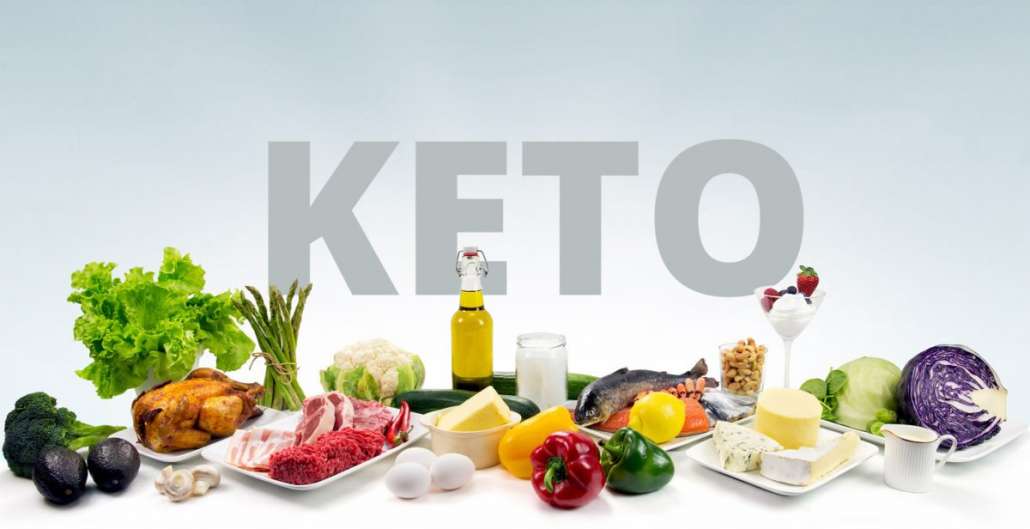Although Ketosis has been sighted as an unhealthy metabolic state by many health advocates, it’s actually a normal metabolic process that is now showing great promise in providing several major health benefits.
During ketosis, your body converts fat into compounds known as ketone bodies. These ketone bodies are then used by the body as its main energy source.
Studies have found that diets that promote ketosis are highly beneficial for weight loss, particularly body fat reduction, due in part to its satiating effect, therefore automatically suppressing ones appetite naturally. (1)
In addition, emerging research suggests that ketosis is showing promise as being a helpful tool in combating Type II Diabetes, Polycystic ovary syndrome (PCOS) and Nonalcoholic fatty liver disease (NAFLD) as well as neurological disorders such as Epilepsy, Parkinson’s Disease (PD), Autism spectrum disorder (ASD), Multiple sclerosis (MS) and Alzheimer’s. (2, 3, 4, 5, 6, 7)
However, for those who may be eager to try to take their body into a state of ketosis it can undoubtedly take some planning and work. And to do it healthfully, it’s not just as simple as cutting back on your carbohydrate intake.
Here are 7 tips to help get you into ketosis safely and effectively
1. Ketosis and Carb Consumption
Eating a very low carb diet is by far the most crucial piece in achieving ketosis. Normally, your cells use glucose (sugar) as their main source of fuel. However, most of your cells can also use other fuel sources as well. This includes fatty acids, certain amino acids and ketones bodies. (8)
Your body stores glucose from the carbohydrates you ingest in your liver and muscles in the form of glycogen.
When your carb intake is very low, glycogen stores are reduced and levels of the hormone insulin rapidly decline. This allows fatty acids to be released from fat stores in your body.
Your liver converts some of these fatty acids into the ketone bodies acetone, acetoacetate and beta-hydroxybutyrate. These ketones can then be used as fuel by the body and portions of the brain. (9, 10)
And although the level of carb restriction needed to induce ketosis is somewhat individualized most people will do fine keeping their carb intake between 20g and 40g per day.
In fact, in a one week study where overweight people with type II diabetes limited there carb intake to 20 grams or less per day experienced daily urinary ketone excretion levels 27 times higher than that of baseline. (11)
And in another study, adults with type II diabetes were allowed 20 to 50 grams of digestible carbs per day, depending on the number of grams that allowed them to maintain blood ketone levels within a target range between 0.5 to 3.0 mmol/L. (12)
These carb and ketone ranges are advised for people who want to get into ketosis to promote weight loss, control blood sugar levels or reduce heart disease risk factors.
In contrast, therapeutic ketogenic diets used for epilepsy or as experimental cancer therapy often restrict carbs to fewer than 5 percent of total calories or fewer than 15 grams per day to further drive up ketone levels. However, anyone using the diet for therapeutic purposes should only do so under the supervision of a medical professional. (13, 14)
2. Ketosis and Coconut Oil
Unlike most fats, coconut oil contains what is known as Medium Chain Triglycerides (MCTs). MCTs are rapidly absorbed by the body and taken directly to the liver, where they can be used as immediate energy or converted into ketones.
In fact, it’s been suggested that consuming coconut oil may be one of the best ways to increase ketone levels in people with Alzheimer’s and other neurological disorders. (15)
Although coconut oil contains four types of MCTs, 50 percent of its fat comes from what is known as lauric acid. Research suggests that fat sources with a high percentage of lauric acid may produce a more sustained level of ketosis. This is because it’s metabolized more gradually than other MCTs. (16, 17, 18)
MCTs have been used to induce ketosis in epileptic children without restricting carbohydrates as drastically as the classic ketogenic diet.
In fact, several studies have found that a high MCT diet containing up to 20 percent of calories from carbohydrates produces effects similar to the classic ketogenic diet, which provides fewer than 5 percent of calories from carbs. (19, 20)
When adding coconut oil to your diet, it’s a good idea to do so slowly to minimize digestive side effects like possible stomach cramping or diarrhea. Start with one teaspoon per day and work up to two to three tablespoons daily over the course of a week or two.
3. Ketosis and Physical Activity
A growing number of studies have found that being in ketosis may be beneficial for certain types of athletic training, particularly endurance exercise. Additionally, being more active can actually help bring you into a state of ketosis. (21, 22, 23)
When you exercise, you deplete your body of its glycogen stores. Normally, these are replenished when you eat carbohydrate based foods, which are broken down into glucose and then converted to glycogen.
However, if your carbohydrate intake is minimized, glycogen stores dramatically drop and remain low. In response, your liver increases its production of ketones, which can be used as an alternate fuel source for your muscles.
In fact, one study found that at low blood ketone concentrations, exercise increases the rate at which ketones are produced. However, when blood ketones are already elevated, they do not rise with exercise and may actually decrease for a short period. In addition, working out in a fasted state has been shown to drive up ketone levels as well. (24, 25)
But, keep in mind that although exercise increases ketone production, it may take one to four weeks for your body to adapt to using ketones and fatty acids as your primary fuels. During this time, physical performance may actually be reduced temporarily. (26)
4. Ketosis and Healthy Fat Intake
A ketogenic diet not only minimizes carbs, but also increases your need for fat, so consuming plenty of healthy fat is imperative to helping reach ketosis. In fact, ketogenic diets for weight loss, metabolic health and exercise performance usually provide between 60 to 80 percent of calories from fat.
Additionally, classic ketogenic diet used for therapy in common neurological disorders such as epilepsy is even higher in total calories from fat, typically ranging from 85 to 90 percent. However, extremely high fat intake doesn’t necessarily translate into higher ketone levels. (27)
For example, a three week study done with 11 healthy people compared the effects of fasting with different amounts of fat intake on breath ketone levels. The outcome was the overall ketone levels were similar in people consuming 80 percent of their total calories from fat or 90 (plus) percent of their total calories from fat. (28)
However, because fat makes up such a large percentage of a ketogenic diet it’s important to focus on choosing high quality sources. These include fats such as olive oil, avocado oil, coconut oil, butter, lard and tallow.
5. Ketosis and Intermittent Fasting
Another technique to getting into ketosis is to go without eating for several hours. In fact, many healthy people actually end up going into mild state ketosis between dinner and breakfast as blood sugars drop into a hypoglycemic range.
This is why children with epilepsy are sometimes fasted for 24 to 48 hours before they start a ketogenic diet. This is done to get them into ketosis quickly so that seizures can be reduced much quicker. (29, 30)
Additionally, the fat fasting technique is another ketone boosting approach that mimics the effects of fasting. This approach involves consuming about 1,000 calories per day, 85 to 90 percent of which come from fat. This combination of low calorie and very high fat intake has been said to help achieve ketosis quicker.
However, because a “fat fast” is so low in protein and calories, it should only be followed for a maximum of three to five days in an effort to prevent any excessive loss in lean muscle tissue.
6. Ketosis and Protein Intake
Achieving ketosis requires an adequate amount of protein intake. And although a classic ketogenic diet used in epilepsy patients is restricted in both carbs and protein to maximize ketone levels, for most people, cutting back on protein to increase ketone production isn’t a healthy practice.
First, it’s important to consume enough protein to supply the liver with amino acids that can be used for gluconeogenesis (gluco = sugar, neo = new, genesis = creation) which translates to “making new glucose.”
In this process, your liver provides glucose for the few cells and organs in your body that can’t use ketones as fuel, such as your red blood cells and portions of the kidneys and brain.
Second, protein intake should be high enough to maintain lean muscle tissue when carb intake is low, especially during weight loss.
Although losing weight typically results in the loss of both muscle and fat, consuming sufficient amounts of protein on a very low carb ketogenic diet can help preserve muscle tissue. (31, 32)
Several studies have shown that the preservation of muscle mass and physical performance is maximized when protein intake is in the range of 0.55 to 0.77 grams per pound of lean tissue. Notably, in weight loss studies using very low carb diets with protein intake within this range have been found to induce and maintain ketosis. (33, 34, 35)
In fact, in one study of 17 obese men, following a ketogenic diet providing 30 percent of calories from protein for four weeks led to blood ketone levels of 1.52 mmol/L, on average, which is well within the 0.5–3.0 mmol/L range of nutritional ketosis. (36)
To calculate your protein needs on a ketogenic diet, multiply your ideal body weight in pounds by 0.55 to 0.77. For example, if your ideal body weight is 150 pounds, your protein intake should be 82 to 115 grams respectively.
7. Ketosis and Diet Adjustments
Like many things in nutrition, achieving and maintaining a state of ketosis is highly individualized. Therefore, it can be helpful to test your ketone levels to ensure you’re achieving your goals.
The three types of ketones can be measured in your breath, blood or urine.
- Acetone
- Beta-hydroxybutyrate
- Acetoacetate
Acetone is found in your breath, and studies have confirmed testing acetone breath levels is a reliable way to monitor ketosis in people following ketogenic diets. (37)
The Ketonix meter measures acetone in breath. After breathing into the meter, a color flashes to indicate whether you are in ketosis and how high your levels are. (38)
Ketones can also be measured with a blood ketone meter. Similar to the way a glucose meter works, a small drop of blood is placed on a strip that’s inserted into the meter.
It measures the amount of beta-hydroxybutyrate in your blood, and it has also been found to be a valid indicator of ketosis levels. However, the disadvantage of measuring blood ketones is that the strips are very expensive. (39)
Lastly, the ketone measured in urine is acetoacetate. Ketone urine strips are dipped into urine and turn various shades of pink or purple depending on the level of ketones present. A darker color reflects higher ketone levels.
Ketone urine strips are easy to use and fairly inexpensive. Although their accuracy in long term use has been questioned, they should initially provide confirmation that you are in a state of ketosis.
So, using one or more of the methods outlined here can help you determine whether you’re in a state of ketosis or if you need to make any dietary adjustments in order to help get you into ketosis.


